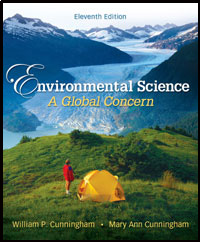1 A) a single critical factor that exceeds the organism's tolerance limits. B) absence of an essential resource. C) a combination of different factors working in concert. D) all of the above. 2 A) competition with other members of the species. B) disease-causing organisms. C) extreme temperatures. D) all of the above. 3 A) ecological niche, habitat B) habitat, ecological niche 4 A) a wide range of foods eaten. B) activity periods extending over much of the day and evening. C) tolerance of a wide range of temperatures. D) all of the above. 5 A) a moose nibbling on aspen shoots B) a crow feeding on a road-kill rabbit C) a black bear eating blueberries D) disease-causing bacteria invading human lung tissue 6 A) an insect species becoming immune to a toxic substance produced by rhubarb to foil herbivory. B) development of greater speed by gazelles in response to prior development of greater speed by leopards, a gazelle predator. C) development of greater root depth in a plant species in response to increased competition for water with another species. D) all of the above. 7 A) co-evolution, intraspecific B) territoriality, intraspecific C) commensalism, intraspecific D) territoriality, interspecific 8 A) a wild raspberry plant growing 30 grams of new leaf mass during a day of photosynthesis. B) a young oriole growing 10 more grams of muscle during a feeding trip to a raspberry bush. C) a young hawk growing 10 more grams of body mass by killing and eating a young oriole. D) more than one of the above. 9 A) the diversity of the trophic structure. B) the species diversity within the various trophic levels. C) the number of trophic levels present. D) more than one of the above. 10 A) photosynthesis. B) respiration. C) grazers feeding on plants. D) net primary productivity. 11 A) TRUE B) FALSE 12 A) TRUE B) FALSE 13 A) TRUE B) FALSE 14 A) TRUE B) FALSE 15 A) TRUE B) FALSE 16 A) The birds lived together on the same islands B) the birds were related but had been modified to survive under different conditions C) they were all the same species but their beaks were different D) they were more colorful than the mainland birds 17 A) they suggest that a barren ecosystem will soon recover B) they suggest the level of resilience an ecosystem will have C) their presence indicates something about the ecosystem as a whole D) All of the above 18 A) Have narrowly specific habitat requirements B) Tend to have lower reproductive rates than generalists C) Are very intolerant to environmental change D) All of the above 19 A) Describes relationships among species B) Allocates public funds for conservation efforts C) Attempts to create new species in laboratories D) None of the above 20 A) number of different species present B) number of ecological niches C) amount of genetic diversity D) All of the above





